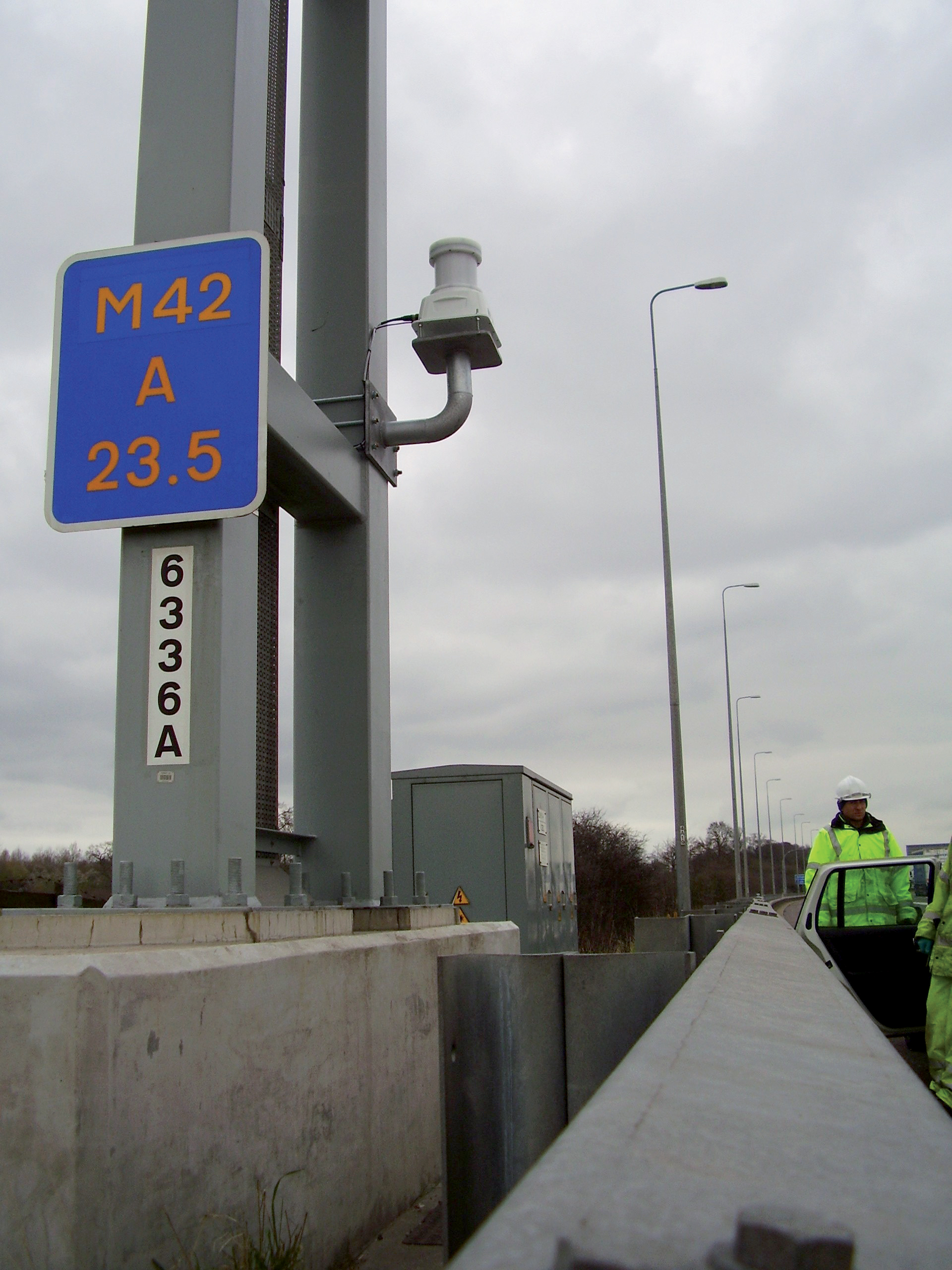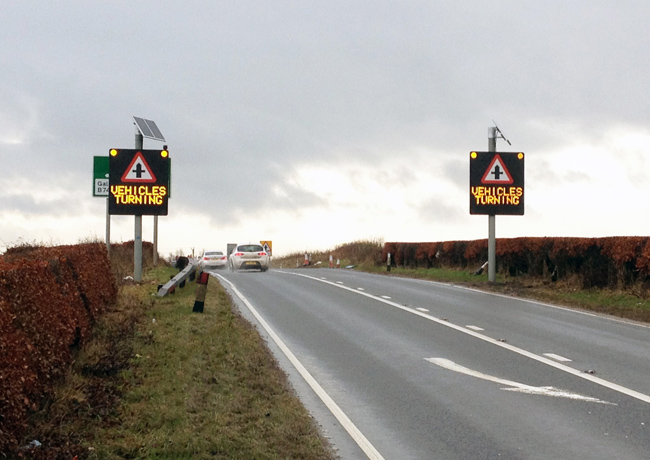
Traffic congestion is increasing around the world – and transit organisations in many countries are turning to a variety of schemes to increase road capacity at peak times. Chief among these is hard shoulder running to create an extra lane, relatively cheaply, at fixed times where there are known bottlenecks.
The UK Highways Agency (HA)’s Managed Motorways programme began in 2006 with a pilot scheme on 11 miles along the M42. Using the hard shoulder as a traffic lane at busy times, coupled with variable speed limits, traffic flow has improved.
Since it is illegal for drivers to use the hard shoulder under normal circumstances – not least to allow access for emergency services – one of the main concerns from critics is that accidents and incidents must be more likely than with normal running.
However, the HA insists this is not the case: its experience suggests that journey time predictability increases, congestion eases, and accident rates are no worse. In fact, in the case of the M42 pilot, they were better: the HA’s three-year safety report, published in March 2011, showed accidents involving personal injury had been cut by more than half (56%), with no fatalities. Casualties per billion vehicle miles travelled are down by just under two-thirds (61%) since hard shoulder running was introduced.
Encouraged by this, the HA either has extended or will extend such schemes to take in the M62 in West York-shire (junctions 25-30), the M1 in Bedfordshire (10-13), the M4/M5 around Bristol and the M6 (5-8).
“We learned from the M42,” says an HA spokeswoman. “For example, we have increased the spacing of the gantries slightly and realised the Emergency Refuge Areas (ERAs) didn’t have to be so close together.”
Dutch experience
Experts in other countries, too, have been immersed in a similar learning process. In the Netherlands, the principle of hard shoulder running has been established since 2004, with roads including the A15, A27, A28 and A50 among the highways using peak-hour lanes. At
Based at the Netherlands’ national traffic management centre, de Haan is chairman of CENTRICO (Central European Region Transport Telematics Implementation Coordination), which co-ordinates the deployment of intelligent transport systems on the Trans-European Road Network.
The Dutch experience has been similar to the UK in terms of accidents. “There is no proof of more accidents when using hard shoulder running in the Netherlands,” de Haan insists. “When it is applied, congestion is solved, reducing the number of accidents. Accidents because of no available hard shoulder are very scarce.”
Across the Atlantic, the feeling is much the same. “The various agencies in the US that have monitored safety after the implementation of shoulder running have not found a significant increase in crashes,” agrees Beverly Kuhn, system management division head and senior research engineer at the
Traffic signage is crucial here, directing people in and out of hard shoulders to avoid accidents and incidents. “One way is to provide advance warning of the shoulder use with static or dynamic signage,” Kuhn goes on.
“In the US, treatments have included static overhead regulatory and guide signs, electronic lane control signals that indicate with an arrow or X if the shoulder is open or closed, overhead dynamic message signs, and static yellow warning signs.” Agencies can also install enhanced road markings as clear visual guidance to improve a driver’s ability to stay within the right lane, she adds.
“We’re reducing the number of gantries, and moving to more of the big MS4 matrix signs at the side of the road,” the HA spokeswoman says. “Compliance is key along these stretches of motorway: we are asking people to observe signage.”
Monitoring equipment
It needs careful monitoring, too, de Haan explains. “More cameras are required to inspect the hard shoulder for obstacles before opening,” he says. “In the Netherlands there is a camera on average every 200-250m. Hard shoulder running is an extension of the work area and that means that more operators are needed.”
The full panoply of detection and monitoring equipment is certainly there on managed routes: Motorway Incident Detection & Automatic Signalling (MIDAS) loops and traffic-related data gathering technology, along with Variable Message Signs (VMS), Advanced Motorway Indicators (AMI), Motorway Matrix Indicators (MMI) and Lane Control Signals (LCS) and, of course, fixed and pan-tilt-zoom (PTZ) CCTV cameras.
“To the extent that this equipment is already installed in the corridor, additional monitoring equipment may not be necessary,” says Kuhn, “particularly if other active traffic management strategies are already deployed, such as dynamic speed limits and queue warning.”
This chimes with the HA’s thoughts: the agency insists that cameras do not have to be sited more frequently on such roads. “We’ve already got CCTV cameras and are looking at verge-mounted cameras,” the spokeswoman explains.
“If the existing cameras have PTZ capability and allow an operator to quickly view the shoulder for debris or disabled vehicles, typical installations for TMC [Transportation Management Centre] support may suffice,” Kuhn goes on.
“If existing cameras cannot accomplish this, then an agency could install more and/or conduct a quick visual inspection in a maintenance vehicle to ensure the shoulder is clear prior to opening.”
Using the hard shoulder for traffic is undoubtedly manpower-intensive, with operatives required to watch feeds from a large number of cameras. It is likely that some additional staff would be needed in most cases, thinks Kuhn, but it depends on the length of deployment and the number of corridors on which shoulder running is in place.
Servicing and maintenance
More technology, of course, means more to service and maintain. De Haan says there is no particular issue with this but concedes: “Maintaining the roadside attributes does lead to more maintenance costs.” “If additional equipment has been installed to support operations, it does directly impact maintenance costs,” agrees Kuhn. “If cameras are mounted on sign gantries over the travel lanes, then their maintenance would require lane closure – however, if they are mounted outside of the shoulder, they may not.”
Even those on gantries could be more easily checked with devices such as the Camera Lowering System by US firm [MG]², which allows for a camera and its housing to be detached and lowered on a stainless steel wire aircraft cable to ground level.
Exactly how much extra cost is involved in using the hard shoulder is difficult to calculate – the HA says it is unable to split out a figure, for instance. “The low number of managed motorway sections allows it to form part of our overall costs for operating the Strategic Road Network,” the agency’s spokeswoman says. “Any additional resource requirements will be balanced against other efficiencies we have introduced into our control room operations.”
But the attraction of such schemes for financially hard-pressed transport authorities all over the world is clear: it requires neither a great deal of new construction nor the potential legal quagmire of a land-grab.
Incident reaction
When problems do occur, they need to be acted on quickly. “Incidents are picked up by on-road technology such as CCTV or by our on-road officers,” the HA spokeswoman says. “MIDAS loops can detect whether traffic flow is breaking down and automatically introduce variable speed limits. If there is debris or a broken-down vehicle, we can sign back that there’s an incident ahead. We will still have ERAs on sections of managed motorway, with a maximum of 2.5km between them. And there are still motorway service areas and hard shoulders on slip roads.”
Motorists should be encouraged to do everything possible to exit the freeway should they experience vehicle trouble or be involved in a minor crash, Kuhn adds, with some US states even having laws requiring drivers to do so.
“The installation of accident investigation sites and ERAs may help encourage this behaviour on heavily-travelled roadways.”
Kuhn goes on. “Also, if specific traffic control devices are deployed – for example, DMS [Dynamic Message Signs] or lane control signals -these can be used effectively to divert traffic from the blocked lanes or close the shoulder if necessary to facilitate response.”
Following on from this, ensuring, monitoring and controlling emergency vehicle access is among the biggest issues for agencies considering the idea. “During an incident on the hard shoulder or the lane next to the hard shoulder, it will be closed immediately to allow for use by service vehicles such as police, ambulance, fire brigade and salvage,” de Haan says. “When an incident occurs on lane one, the innermost lane, this would be closed while the hard shoulder remains open.”
In the US, Kuhn says response can include newly-dedicated or increased use of motorist service patrols on the facility where shoulder use takes place and the co-ordination of state police, fire and other emergency services. “Tow trucks stationed strategically throughout the facility to clear a lane or the shoulder should an incident occur can also be effective,” she explains.
Above all, however you do it, having dedicated resources to support maintenance and operation of this potentially controversial practice is “key to long-term success”, Kuhn concludes.












